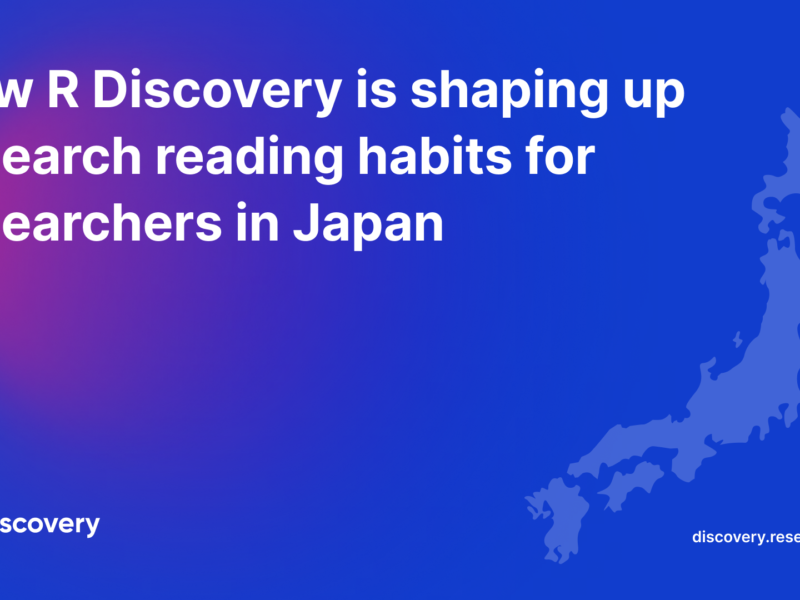 If the global pandemic has made one thing clear – it is an absolute necessity to bridge the gap between science and society, and make science more accessible for the general public. The open access movement has been on the rise since the past few decades and the Plan S initiated in 2018 by cOAlition S – an international consortium of research funding and performing organizations – has been a pioneer in bringing the open access movement to the forefront. Plan S requires and mandates that all the research funded by public grants must be published in compliant open access journals or platforms. So far, there has been a mixed reaction toward this initiative, with some journals supporting the Plan S mandates, while other journals rejecting crucial aspects of Plan S. These mixed reactions suggest that there is much to consider and understand in terms of what open access publication really entails.
If the global pandemic has made one thing clear – it is an absolute necessity to bridge the gap between science and society, and make science more accessible for the general public. The open access movement has been on the rise since the past few decades and the Plan S initiated in 2018 by cOAlition S – an international consortium of research funding and performing organizations – has been a pioneer in bringing the open access movement to the forefront. Plan S requires and mandates that all the research funded by public grants must be published in compliant open access journals or platforms. So far, there has been a mixed reaction toward this initiative, with some journals supporting the Plan S mandates, while other journals rejecting crucial aspects of Plan S. These mixed reactions suggest that there is much to consider and understand in terms of what open access publication really entails.
In this article, we highlight some of the consequences of switching to an open access publication model on the stakeholders involved – such as researchers, educators, journals, and publishers. It also suggests some simple points to keep in mind while chalking the way ahead, especially for the major global publishing houses.
Given below are some of the most prominent effects of switching to open access publishing:
- Researchers, educators and the general public will be most benefitted by open access articles. Knowledge can be disseminated faster and easier, leading to an acceleration in efforts to bridge the gap between scientists and lay persons. Due to faster dissemination, there will be a stronger push toward generation of newer ideas, giving rise to an increase in the total number of research studies.
- The Plan S mandates that the author publishing charges (APCs) be borne by the funding agency or the research organization; however, if this is not implemented properly, authors may end up bearing an increase in the cost of publication. Thus, authors may be forced to limit their options when choosing target journals, especially if their funding organization requires them to follow open access policy. Further, authors may also fall into the trap of choosing and committing to ‘predatory journals’, which promise faster publication, open access, and reduced publishing fees.
- The switch to open access publication may allow for an increase in readership as well as citations for certain journals, which may in turn raise their impact factor and lead to an increase in number of publications.
- However, as the total number of publications increase it may become harder for publishing houses to keep tabs on the quality of research published, especially at the same publication costs.
Taking all these points into consideration, one can say that switching to open access publishing may prove to be a boon for a certain section of authors, and at the same time be a tough call for publishers and journals. Here are some points that publishers can keep in mind while considering a switch to the open access model and to ease the transition:
- All publishers, both big and small, need to keep a track of the latest developments in the Plan S movement and the technical guidelines that are released for its implementation. The fully converted open access journals may also need to keep occasional tabs in order to ensure that they are on the right track.
- If newly launched journals are not earning enough revenue, publishers can consider converting them into open access journals, in order to help them gain the necessary traction, popularity and attract more submissions.
- Conversely, if a journal is already widely popular and generating a decent revenue, has a strong author community, and also has a high rate of submissions without a compromise in quality, publishers can opt for an open access model as the transition might be much smoother.
- Major publishing houses may find it relatively easier to switch an existing journal to open access, rather than to launch a completely new open access journal. This is because existing journals already bring with them the quality and reputation that authors look for while choosing their target journals.
Regardless of the dynamics of open access publishing, it is clear that the period of change and transition is already here. However, open access poses quite a few challenges and despite an increase in the number and quality of open access articles, its long-term impact and sustainability in the scholarly publication industry remains to be seen. We hope this article will help you make a more informed decision regarding open access and understand the changes it may have on the research publication landscape.
Further reading:
- Plan S: An update on what’s happening and what’s in store. Editage Insights, 2022. https://www.editage.com/insights/plan-s-an-update-on-whats-happening-and-whats-in-store
- Pros and cons – What is Open Access. https://www.openaccess.nl/en/what-is-open-access/pros-and-cons


